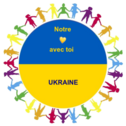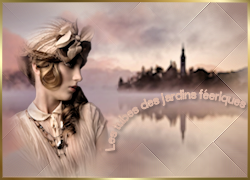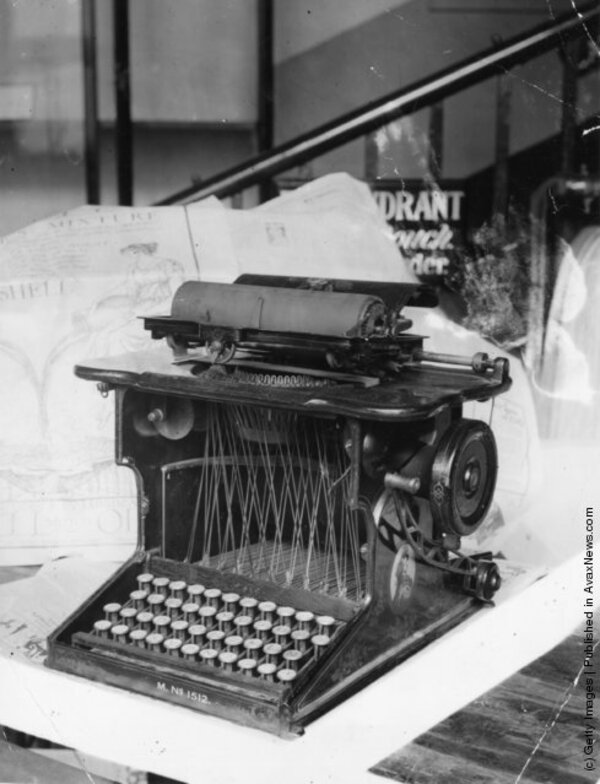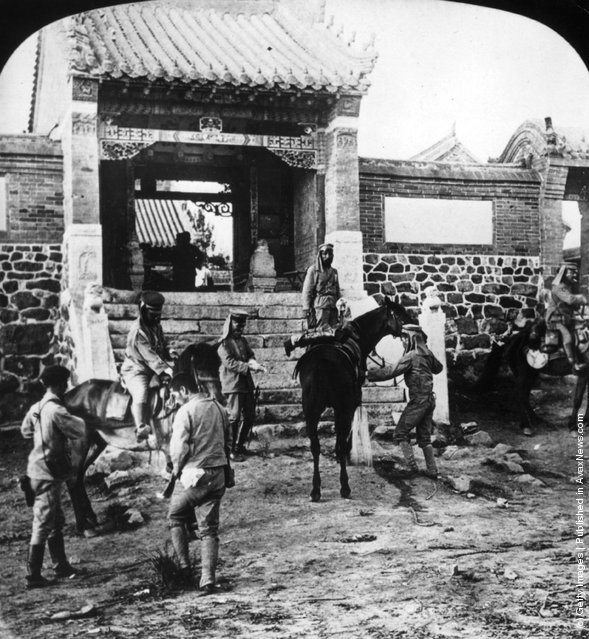-
Par Frawsy le 12 Novembre 2013 à 19:21
La Chine 1917-1919 par le photographe Sidney David Gamble
Crowd – watching picture being taken. China, Beijing, 1917-1919. (Photo by Sidney David Gamble)
Mr. Chia. China, Tianjin, 1917-1919. (Photo by Sidney David Gamble)
Child Collecting Fuel & Scared. China, Tianjin, 1917-1919. (Photo by Sidney David Gamble)
Man Riding Barrow. China, Guan Xian (Sichuan Sheng), 1917-1919. (Photo by Sidney David Gamble)
Selling Old Iron. China, Chengdu, 1917-1919. (Photo by Sidney David Gamble)
Lumber Carrier. China, Guan Xian (Sichuan Sheng), 1917-1919. (Photo by Sidney David Gamble)
Funeral Feast. China, An Xian, 1917-1919. (Photo by Sidney David Gamble)
Carrying Tea. China, Qushan, 1917-1919. (Photo by Sidney David Gamble)
Hillcoat Riding Fu Tu. China, An Xian, 1917-1919. (Photo by Sidney David Gamble)
Sidney Gamble Chair & Corona. China, Chengdu, 1917-1919. (Photo by Sidney David Gamble)
Talley Keeper. China, Shanghai, 1917-1919. (Photo by Sidney David Gamble)
Old Gun. China, Mao Zhou, 1917-1919. (Photo by Sidney David Gamble)
Mr. & Mrs. Kao (Gao) in Tibetan. China, Zagunao, 1917-1919. (Photo by Sidney David Gamble)
Fur collar. China, Beijing, 1917-1919. (Photo by Sidney David Gamble)
Brush Carrier (Bad). China, An Xian, 1917-1919. (Photo by Sidney David Gamble)
Beggar Boy. China, Tai Mountains, 1917-1919. (Photo by Sidney David Gamble)
Boy Scouts House. China, Beijing, 1917-1919. (Photo by Sidney David Gamble)
Harrowing. China, Beijing, 1917-1919. (Photo by Sidney David Gamble)
13,500 Cash to Shu Fu Tsang. China, Shu Fu Tsang (Sichuan Sheng), 1917-1919. (Photo by Sidney David Gamble)
Barbers on Bund. China, Yichang Shi, 1917-1919. (Photo by Sidney David Gamble)
Policeman in boat during a flood. China, Tianjin, 1917-1919. (Photo by Sidney David Gamble)
Two Grandmas, Salvation Army. China, Tianjin, 1917-1919. (Photo by Sidney David Gamble)
Children Carrying Firewood. China, Hangzhou, 1917-1919. (Photo by Sidney David Gamble)
Soldiers. China, Guangzhou, 1917-1919. (Photo by Sidney David Gamble)
Page & Children. China, Beijing, 1917-1919. (Photo by Sidney David Gamble)
Pusiang Children at Table. China, Hangzhou, 1917-1919. (Photo by Sidney David Gamble)
$5,000 (Five thousand dollar) Check. China, Beijing, 1917-1919. (Photo by Sidney David Gamble)
Victory Celebration, November 13, Diplomats etc. Baron Hayashi. China, Beijing, 1917-1919. (Photo by Sidney David Gamble)
Man on Wheelbarrow. China, Kaifeng Xian, 1917-1919. (Photo by Sidney David Gamble)
Prison, Making Matches. China, Beijing, 1917-1919. (Photo by Sidney David Gamble)
Beggars, Beihai Park. China, Beijing, 1917-1919. (Photo by Sidney David Gamble)
Student Arrest Soldiers on Guard. China, Beijing, June 4 1919. (Photo by Sidney David Gamble)
Hangyang Iron Works. China, Hankou (Wuhan), 1917-1919. (Photo by Sidney David Gamble)
Stove. China, Beijing, 1917-1919. (Photo by Sidney David Gamble)
Dr. Metcalf & Patients. China, Tianjin, 1917-1919. (Photo by Sidney David Gamble)
Needle Pagoda. China, Hangzhou, 1917-1919. (Photo by Sidney David Gamble)
Child with Life Preserver. China, Guangzhou, 1917-1919. (Photo by Sidney David Gamble)
Woman & Baby. China, Tongliang Xian, 1917-1919. (Photo by Sidney David Gamble)
Suspension Bridge. China, Mao Zhou, 1917-1919. (Photo by Sidney David Gamble)
Water Chestnuts. China, Hangzhou, 1917-1919. (Photo by Sidney David Gamble)
Man on Rope Bridge. China, Zagunao, 1917-1919. (Photo by Sidney David Gamble)
Tsinghua Crowd & Poteat family. China, Kaifeng Xian, 1917-1919. (Photo by Sidney David Gamble)
Wood Market and Canal. China, Hangzhou, 1917-1919. (Photo by Sidney David Gamble)
Sui An Po – Mud. China, Beijing, 1917-1919. (Photo by Sidney David Gamble)
Funeral Set, Paper Horse & Carriage. China, Beijing, 1917-1919. (Photo by Sidney David Gamble)
New Year's worship, Woman lighting Incense. China, Baoding Fu, February 1, 1919. (Photo by Sidney David Gamble)
Honey Wagon. China, Beijing, 1917-1919. (Photo by Sidney David Gamble)
Machine Shop. China, Beijing, 1917-1919. (Photo by Sidney David Gamble)
Chi Hua Men Chapel & Reception Committee. China, Beijing, 1917-1919. (Photo by Sidney David Gamble)
Buddhist Orphanage Reform School, Lithographing. China, Beijing, 1917-1919. (Photo by Sidney David Gamble)
November 29 student demonstration, Tiananmen Square. China, Beijing, 1917-1919. (Photo by Sidney David Gamble)
YMCA (Young Men's Christian Association) Building. China, Beijing, 1917-1919. (Photo by Sidney David Gamble)
Sui An Po children, one picking nose. China, Beijing, 1917-1919. (Photo by Sidney David Gamble)
Anti-Opium Inspectors. China, Beijing, 1917-1919. (Photo by Sidney David Gamble)
Winnowing. China, Beidaihe, 1917-1919. (Photo by Sidney David Gamble)
City God, Attendant & Boys. China, An Xian, 1917-1919. (Photo by Sidney David Gamble)
Boys Fishing. China, Xindu Xian, 1917-1919. (Photo by Sidney David Gamble)
Making Sandals Sun Yien Dien. China, Sanyuan Zhen (Santai Xiang, Sichuan Sheng), 1917-1919. (Photo by Sidney David Gamble)
Grub Boxes. China, Chengdu, 1917-1919. (Photo by Sidney David Gamble)
Sawing Coffin Tops. China, Tongchuan (Sichuan Sheng), 1917-1919. (Photo by Sidney David Gamble)
Escort. China, Zhaozhen (Sichuan Sheng), 1917-1919. (Photo by Sidney David Gamble)
Money Changer. China, Tianjin, 1917-1919. (Photo by Sidney David Gamble)
Nut Boys. China, Tanzhesi, 1917-1919. (Photo by Sidney David Gamble)
Charley. China, Beijing, 1917-1919. (Photo by Sidney David Gamble)
Ferryman. China, Chongqing, 1917-1919. (Photo by Sidney David Gamble)
Funeral Paper Servants. China, Beijing, 1917-1919. (Photo by Sidney David Gamble)
Women Mr. Lie Camp. China, Tianjin, 1917-1919. (Photo by Sidney David Gamble)
Boat on Mud Slide. China, Hangzhou, 1917-1919. (Photo by Sidney David Gamble)
Weaving Belts. China, Hangzhou, 1917-1919. (Photo by Sidney David Gamble)
Thanksgiving Day Review, President's Party at Hall of Supreme Harmony. China, Beijing, 1917-1919. (Photo by Sidney David Gamble)
Thanksgiving Day Review, President Making Speech Telar. China, Beijing, 1917-1919. (Photo by Sidney David Gamble)
Road to Temple Beggars. China, Baoding Fu, 1917-1919. (Photo by Sidney David Gamble)
Rickshas, Bicycle. China, Beijing, 1917-1919. (Photo by Sidney David Gamble)
Tsinghua Scouts Cooking. China, Beijing, 1917-1919. (Photo by Sidney David Gamble)
Opium burning, Group Behind Tables. China, Beijing, 1917-1919. (Photo by Sidney David Gamble)
Old Man and children. China, Beidaihe, 1917-1919. (Photo by Sidney David Gamble)
American Board District, Blind Beggar. China, Beijing, 1917-1919. (Photo by Sidney David Gamble)
Mule Litter. China, Beijing, 1917-1919. (Photo by Sidney David Gamble)
Wedding Carriages. China, Beijing, 1917-1919. (Photo by Sidney David Gamble) votre commentaire
votre commentaire
-
Par Frawsy le 10 Novembre 2013 à 16:59
Le svastika, symbole indogermanique
Le svastika, symbole sanskrit, serait, au dire des théoriciens nazis, le symbole indogermanique le plus important
Parmi les symboles nazis, le svastika, le plus connu, permet de lier de façon plus ou moins explicite le mouvement nazi et ces mythiques ancêtres prestigieux que sont les populations indogermaniques qui auraient conquis l'Europe et une partie de l'Asie à plusieurs reprises, comme semblerait le prouver la présence de svastikas dans l'ensemble de l'Europe et de l'Asie, de l'Atlantique au Japon.
Les théoriciens du nazisme confèrent à la croix gammée une dimension historique. Dès les années 1920, la croix gammée, sur les objets et les constructions, démontrait, d'abord selon Rosenberg, puis selon d'autres idéologues du nazisme à sa suite, la présence ancienne de populations aryennes, donc indogermaniques dans une région donnée. Rosenberg situe son apparition vers 3000 av. J.-C. en Europe du Nord, foyer originel des populations indogermaniques, et affirme que sa diffusion dans l'Ancien Monde aurait suivi l'essor territorial et colonial des Indogermains. S'appuyant sur ces postulats, une monographie historique publiée en 1934 et consacrée au svastika défend le monopole de l'usage de celle-ci par le peuple allemand. L'auteur, après avoir recensé de manière exhaustive les sites archéologiques grecs sur lesquels des svastikas ont été trouvées, défend l'idée de l'antériorité de la présence de ce symbole en Scandinavie ce qui démontrerait ainsi le caractère indubitablement indogermanique de la civilisation grecque. De même, un tel lien de parenté est âprement défendu par Hans Günther dans son Histoire raciale du peuple grec et du peuple romain, publiée en 1929.
One of the huge swastika signs being hung during preparations for a May Day rally where Hitler will address a crowd of nearly 2,000,000 in the Tempelhof Field in Berlin. (Photo by Keystone). 30th April 1934
Massed ranks of German soldiers at the Tempelhof airfield to listen to a May Day speech by Hitler as Chancellor. (Photo by Three Lions). 1st May 1934
Nazi leader Adolf Hitler (1889–1945) arriving to give a May Day address at the Lustgarten in Berlin, 1st May 1936. (Photo by Topical Press Agency)
German dictator and head of the Nazi party, Adolf Hitler, delivering his May Day address at Lustgarten in Berlin. On the left is Joseph Goebbels (1897–1945). (Photo by Topical Press Agency). 1st May 1936
Nazi leader Adolf Hitler on his way to a May Day youth rally at the Lustgarten in Berlin, circa 1938. (Photo by Keystone)
Adolf Hitler addressing thousands of supporters at a Nazi Rally held in the Berlin Stadium on May Day. (Photo by Topical Press Agency). 2nd May 1938
Nazi dictator Adolf Hitler greets supporters at a May Day gathering in the Olympic Stadium, Berlin. (Photo by Keystone). 1st May 1938
German Nazi leader Adolf Hitler (centre, bottom) greets a group of girls before giving a May Day speech to members of the Hitler Youth and its sister organization, the Bund Deutscher Madel (League of German Girls), at the Lustgarten, Berlin, 1st May 1939. (Photo by Topical Press Agency) votre commentaire
votre commentaire
-
Par Frawsy le 10 Novembre 2013 à 16:44
L'évolution de la dactylographie
In April 2011 last factory in the world on manufacture of typewriters was closed. The epoch of typewriters has ended...
Photo: A model of a commercial typewriter from 1867. (Photo by Topical Press Agency/Getty Images). June 1923
Secretaries type while listening to recording machines in the typing pool. (Photo by Evening Standard/Getty Images). 1960
A disabled woman typing with the help of a device attached to her head, at an exhibition of aids for the Disabled in London. (Photo by Hulton Archive/Getty Images). 1951
A woman at work in a chair at the Business Efficiency Exhibition. (Photo by Mike Lawn/Fox Photos/Getty Images). 5th October 1971
A Underwood typewriter. (Photo by Sasha/Getty Images). 17th September 1931
Secretary and Ramsgate beauty queen, Christine James. (Photo by Peter Powell/Express/Getty Images). 12th March 1965
A close-up of a set of keys on an English-language typewriter. Electric typewriters have been in use since 1925. (Photo by Chaloner Woods/Getty Images). Circa 1930
Children of the East London Day Continuation School enjoy their open-air typing lesson at Clacton, a popular destination for evacuees from London during World War II. Despite a recent bomber crash which killed two civilians and injured 156, the area is still considered a safe haven. (Photo by Parker/Fox Photos/Getty Images). 9th May 1940
A Royal typewriter. (Photo by Chaloner Woods/Getty Images). 11th March 1966
US actress Edna May as Lilian Leigh in a production of the musical play “The School Girl”, written by Henry Hamilton and Paul Potter with music by Leslie Stuart. (Photo by Hulton Archive/Getty Images). 1903
The Adler range of typewriters on display at the modern headquarters of Typewriter Sundries, Borough High Street, south London. (Photo by Evening Standard/Getty Images). 1960
A typing class at the Licensed Victuallers School in Slough, Buckinghamshire. (Photo by David Savill/Topical Press Agency/Getty Images). December 1935
A view of a Remington typewriter made around 1873. (Photo by Fox Photos/Getty Images). 16th January 1962
A view of the Remington Standard Model, manufactured in 1922. (Photo by Fox Photos/Getty Images). 16th January 1962
A view of the Remington International Model manufactured in 1961. (Photo by Fox Photos/Getty Images). 16th January 1962
Two city typists at work in an open air swimming pool during a hot summer. (Photo by Topical Press Agency/Getty Images). Circa 1937
Birdie Reeve, a 16-year old type speed demon. (Photo by Topical Press Agency/Getty Images). Circa 1923
An early example of a typewriter, designed in 1866. It was a forerunner of the first practical, commercial machine, patented in 1868 by C L Sholes. (Photo by Topical Press Agency/Getty Images). June 1923
A room full of workers testing typewriters before they leave the factory. (Photo by London Express/Getty Images). Circa 1937
A blind typist types in Braille, a tactile alphabet that allows blind people to read. (Photo by Evans/Three Lions/Getty Images). Circa 1955
Pupils practising their skills at typing school. (Photo by George Pickow/Three Lions/Getty Images). Circa 1955
Stage actress Leonora Bonda sitting at her typewriter in “The Churchmouse” at the Playhouse Theatre in London. (Photo by Sasha/Getty Images). 28th April 1931
A typist at work in an office. (Photo by Hulton Archive/Getty Images). 1953
A woman typing by a window criss-crossed with sticky tape to prevent flying glass. (Photo by London Express/Getty Images). Circa 1940
A secretary in a Skegness fun fair with a chimpanzee called Togo. (Photo by J. Wilds/Fox Photos/Getty Images). 22nd May 1937
A worker at the British Olivetti factory on the Queenslie Industrial Estate, Glasgow, assembling a portable typewriter. The factory is highly modernised and makes machines primarily for export to Australia, New Zealand and Africa. (Photo by Haywood Magee/Picture Post/Getty Images). 20th August 1955
Interior of the Custom House (headquarters of the British Civil Service in Ireland) in Dublin destroyed by the Dublin Brigade of the Irish Republican Army. (Photo by Walshe/Topical Press Agency/Getty Images). April 1921
An Underwood Elliott Fisher Sundstrand accounting machine, circa 1935. (Photo by Hulton Archive/Getty Images)
Businessman inside office typing, US, circa 1950. (Photo by George Marks/Retrofile/Getty Images)
Hands typing, US, circa 1950. (Photo by George Marks/Retrofile/Getty Images) votre commentaire
votre commentaire
-
Par Frawsy le 7 Novembre 2013 à 18:24
Une rétrospective du Japon
General Kuroki Tamemoto (c.1844–1923) and Prince Kuni Kuniyoshi of the Japanese army at Kwantei Temple during the Battle of Liaoyang, an engagement of the Russo-Japanese War, 1904. (Photo by Hulton Archive/Getty Images)
Takenouchi Yasunori, the Japanese commissioner of foreign affairs who led his country's first diplomatic delegation to Paris, 1862. (Photo by Hulton Archive/Getty Images)
The covered shopping street Shijo-Dori (4th street) in Kyoto, Japan, 1905. (Photo by Hulton Archive/Getty Images)
A couple in traditional dress admiring the view over the Japanese port city of Kobe from Suwayama, 1905. (Photo by Hulton Archive/Getty Images)
Three men in the hills above the Japanese village of Kawauchi, Fukushima, circa 1905. (Photo by Hulton Archive/Getty Images)
Traffic and pedestrians in one of Tokyo's main streets, circa 1905. (Photo by Hulton Archive/Getty Images)
The harbour at Nagasaki, Japan, circa 1920. A Christian church can be seen in the foreground. (Photo by Topical Press Agency/Hulton Archive/Getty Images)
Tokyo Station in Japan, circa 1920. The major rail terminal was designed by architect Tatsuno Kingo (Photo by Hulton Archive/Getty Images)
Japanese schoolchildren on parade, celebrating the enthronement of the new Emperor and the birth of a new Empire. (Photo by Hulton Archive/Getty Images). 1935
A group of Japanese schoolgirls marching in formation during a school visit to the third regiment to experience the soldier's way of life. (Photo by Fox Photos/Getty Images). Circa 1938
Japanese farm workers use nets to catch small fish in one of the irrigation channels of a rice field, northern Japan, 1932. (Photo by General Photographic Agency/Hulton Archive/Getty Images)
Pedestrians strolling down shopping street in Ginza district. (Photo by Charles Phelps Cushing/Retrofile/Getty Images). Circa 1930s
Two Japanese women wearing kimonos, bidding an American cruise ship liner bon voyage, Yokohama. (Photo by Charles Phelps Cushing/Retrofile/Getty Images). Circa 1930s
Crowd of women and children waiting for parade, Kobe. (Photo by Charles Phelps Cushing/Retrofile/Getty Images). Circa 1930s
Buddhist pilgrim mother and child wearing traditional costume, begging for donations, Kobe. (Photo by Charles Phelps Cushing/Retrofile/Getty Images). Circa 1930s
A group of young women enjoying a riverside picnic, Japan, 14th January 1933. Two are in traditional dress, while the others are wearing western fashions. (Photo by Fox Photos/Hulton Archive/Getty Images)
Two tea-pickers, Japan, circa 1930. (Photo by Hulton Archive/Getty Images)
A group of women crossing the Kiyosu Bridge over the Sumida River in Tokyo, circa 1935. (Photo by Hulton Archive/Getty Images)
Younger and older samurais at a pageant in Japan, between the two World Wars, circa 1930. (Photo by Hulton Archive/Getty Images)
A farmer ploughs rice fields under Mount Fujiyama, “The Gate Of Heaven” in Japan. The mountain will provide the water necessary for the crop. (Photo by Evans/Three Lions/Getty Images). Circa 1950
A stall selling fish at a market in Shinjuku, Tokyo. (Photo by Orlando /Three Lions/Getty Images). Circa 1955
A group of men who work around the canals of Tokyo and Yokohama meet for a late evening snack. (Photo by Orlando /Three Lions/Getty Images). Circa 1950
A Shinto priest at the torii (gate) of Itsukushima Shrine at low tide on Itsukushima Island, Japan, circa 1955. (Photo by Three Lions/Hulton Archive/Getty Images)
A woman carries a baby past a new block of flats in Hiroshima, Japan, circa 1955. Virtually all the city's old housing was destroyed in the atomic bomb attack of 1945. (Photo by Three Lions/Hulton Archive/Getty Images)
Two young girls in Kimonos in a street near the almost completed Tokyo Tower, July 1958. The tower is a TV and radio broadcasting antenna as well as a tourist attraction. (Photo by Keystone/Hulton Archive/Getty Images)
Rice being symbolically planted in a paddy field during a traditional annual rice festival in Osaka, Japan, circa 1955. (Photo by Evans/Three Lions/Hulton Archive/Getty Images)
A woman, in traditional dress of kimono and platform shoes, boards a bus, Japan, circa 1950. (Photo by Frederick L. Hamilton/Three Lions/Hulton Archive/Getty Images)
A female shoeshine in the Ginza district of Tokyo, circa 1955. (Photo by Orlando/Three Lions/Hulton Archive/Getty Images)
A female bus conductor in Tokyo, circa 1955. (Photo by Three Lions/Hulton Archive/Getty Images)
A pachinko parlor in Shinjuku, Tokyo, circa 1955. (Photo by Orlando/Three Lions/Hulton Archive/Getty Images)
Pedestrians in Tokyo's Ginza district, circa 1950. (Photo by Evans/Three Lions/Hulton Archive/Getty Images)
The bridegroom sits between his two go-betweens at a Japanese shrine, where his wedding will soon take place, circa 1955. (Photo by Three Lions/Hulton Archive/Getty Images)
Platform attendants squeeze as many commuters as possible onto the trains on the Tokyo underground. (Photo by Keystone/Getty Images). 28th April 1972
“Pushers” at work on Tokyo's Shinjuku station in the rush hour, December 1967. They are employed to pack as many passengers as possible into the carriages. (Photo by Keystone/Hulton Archive/Getty Images)
A “Peace Bridge” in Hiroshima, Japan with railings designed by Japanese-American architect Isamu Noguchi, circa 1960. (Photo by Three Lions/Hulton Archive/Getty Images)
A passenger in traditional dress on board a Japanese hikari shinkansen – a type of bullet train, circa 1965. (Photo by Three Lions/Hulton Archive/Getty Images)
Passengers in the second class coach of a Hikari Train in Japan, circa 1965. (Photo by Three Lions/Hulton Archive/Getty Images)
A small child clambers over its mother as she and a friend lie reading magazines in a park, Japan, circa 1965. (Photo by Hulton Archive/Getty Images)
Weekend fishermen from Tokyo fishing for ocean bonitos, Japan, circa 1960. (Photo by Three Lions/Hulton Archive/Getty Images)
Japanese fishing boats on the Nagara river, April 1963. The fishermen use trained cormorants to catch ayu, a type of river smelt. (Photo by Keystone Features/Hulton Archive/Getty Images)
Two clown/musicians advertising a brand of toothpaste in Kyoto, Japan, circa 1960. They are carrying traditional drums and a three-stringed shamisen. (Photo by Bailey/Three Lions/Hulton Archive/Getty Images)
Art students gather round the moat of the Imperial Palace in Tokyo, with their easels, circa 1960. Their paintings will be judged at the end of the summer, and the winners will be awarded diplomas. (Photo by Keystone/Hulton Archive/Getty Images)
An old lady and her grandson leave the photographer's studio in Nagasaki where the little boy has just had his portrait taken, circa 1960. (Photo by Claude Jacoby/Three Lions/Hulton Archive/Getty Images) 1 commentaire
1 commentaire
-
Par Frawsy le 7 Novembre 2013 à 16:34
Une rétrospective de la Libye
La Libye, officiellement État de Libye (en arabe : Lībiyā, ou Lībiyya, ليبيا) est un pays d'Afrique du Nord faisant partie du Maghreb. Elle est bordée au nord par la mer Méditerranée, à l'ouest par l'Algérie et la Tunisie, au sud par le Niger et le Tchad et à l'est par le Soudan et l'Égypte. Elle s’étend sur 1 759 540 kilomètres carrés, ce qui la place au quatrième rang africain et au dix-huitième rang mondial. Sa population est estimée entre 6 et 8 millions d'habitants. Elle se concentre sur les côtes, l’intérieur du pays étant désertique. Sa capitale, Tripoli, est également sa plus grande agglomération (1,8 million d'habitants), devant Benghazi (650 000 habitants), Misrata (plus de 350 000 habitants) et El-Beïda (250 000 habitants).
Les Libyens sont en majorité de culture mixte berbéro-arabe et de confession musulmane sunnite. Le produit intérieur brut de la Libye est l’un des plus élevés d’Afrique. Son économie repose très largement sur l’exportation du pétrole. Elle est membre, entre autres, de la Ligue arabe, de l'Union du Maghreb arabe et de l’OPEP.
La Libye tire son nom d'une tribu berbère qui était nommée Libou, qui a donné le mot grec Libyè. Traditionnellement, on y distingue les régions de Tripolitaine, de Cyrénaïque et du Fezzan. Peuplé originellement de Berbères, son territoire est colonisé pendant l’Antiquité par les Phéniciens, puis les Grecs, avant d’être conquis par l’Empire romain. Au viie siècle, il est envahi par les armées arabes, qui y imposent leur culture et leur religion. Après avoir été soumis à divers royaumes pendant le Moyen Âge, il passe sous le contrôle de l’Empire ottoman au xvie siècle. La Régence de Tripoli devient un véritable État avant d'être directement reprise en main par l'Empire ottoman en 1835.
Dernière possession ottomane en Afrique, l'actuel territoire de la Libye est conquis et colonisé par le Royaume d'Italie en 1912, à l'issue de la guerre italo-turque. Durant la Seconde Guerre mondiale, la Libye italienne est envahie et occupée par les Alliés. En 1951, elle proclame son indépendance sous la forme d’une monarchie dirigée par Idris Ier. Celui-ci est renversé par un coup d'État militaire en 1969 : la monarchie est abolie, et cède la place à la République arabe libyenne. Pendant presque 42 ans, la Libye est dès lors gouvernée par Mouammar Kadhafi qui, en 1977, change le nom du pays en Jamahiriya arabe libyenne populaire socialiste. En 2011, dans le cadre des mouvements de protestation dans les pays arabes, une rébellion éclate et renverse Kadhafi. La Libye est aujourd'hui une république parlementaire, dirigée par un gouvernement provisoire mené par Nouri Bousahmein.
A woman and her two daughters standing on a street in Tripoli, Libya, circa 1930. (Photo by Edward Charles Le Grice/Le Grice)
Libyan cavalrymen charging across the sand on horseback during a military display. 20th December 1939. (Photo by Keystone)
Oil seller on a street in Tripoli, circa 1930. (Photo by General Photographic Agency)
Black shirts are not worn, but these girls are members of the Italian Fascist organisation, taking part in a parade in Tripoli on review day, 1935. (Photo by Baron)
Soldiers being entertained by an officer playing the bagpipes at their camp in Libya, North Africa, during the Second World War, circa 1940. (Photo by Keystone)
The Emir Idris el Senussi, King of Libya leaving Victoria station by car, 1949. (Photo by Keystone)
A soldier of the French Foreign Legion holding his regiment's banner at Bar Hacheim in Libya, circa 1940. (Photo by Three Lions)
Two Libyan boys travelling on an ass turn to stare at a passing German tank in the desert near Tripoli. 1st December 1942. (Photo by Keystone)
Local people accept gifts from troops during the British occupation of Darnah, Libya during the North African campaign of World War II, 28th February 1941. (Photo by Keystone)
Workers clearing the road at Sabratha in Libya, 1950. (Photo by Edward Charles Le Grice/Le Grice)
The 4/7th Dragoon Guards make friends with some locals in Libya, 1952. (Photo by Horace Abrahams/Keystone Features)
London Police Officer, Len Allen, head of the Police Training College, in Tripoli, leading practice for Arab trainee Policemen, circa 1950. (Photo by Keystone)
Trainees at the Police Training College in Busetta, Tripoli, practice their riot drill, 1952. (Photo by Horace Abrahams/Keystone Features)
The secretary and master of ceremonies of the King of Libya stroll in the gardens of the King's offices at Benghazi, 1952. (Photo by Horace Abrahams/Keystone Features)
Group Captain Hubbard at the El-Adem RAF Station in Libya, meeting Princess Mary the Princess Royal (1897–1965), who is to open a new swimming pool, 15th March 1962. With them is nurse June Kay (left). (Photo by Central Press)
Middle-Eastern leaders in Cairo for talks on the situation in Jordan, September 1970. Left to right: King Faisal of Saudi Arabia (1904–1975), President Muammar al-Gaddafi of Libya (1942–2011), President Abdul Rahman Iryani (1910–1998) of the Yemen Arab Republic and President Gamal Abdel Nasser (1918–1970) of Egypt. (Photo by Keystone)
Peter Hain, leader of Young Liberals, heads a demo in a street outside El Al office holding poster (Golda) “Meir Wanted For Murder” after Israeli forces shot down a Libyan airliner. 22nd February 1973. (Photo by Michael Webb/Keystone)
Libyan leader Muammar al-Gaddafi (1942–2011), February 1985. (Photo by Reg Lancaster/Daily Express) 1 commentaire
1 commentaire Suivre le flux RSS des articles de cette rubrique
Suivre le flux RSS des articles de cette rubrique Suivre le flux RSS des commentaires de cette rubrique
Suivre le flux RSS des commentaires de cette rubrique
La Tigresse au coeur tendre






















 Twitter
Twitter del.icio.us
del.icio.us Facebook
Facebook Digg
Digg Technorati
Technorati Yahoo!
Yahoo! Stumbleupon
Stumbleupon Google
Google Blogmarks
Blogmarks Ask
Ask Slashdot
Slashdot






















































































































































































